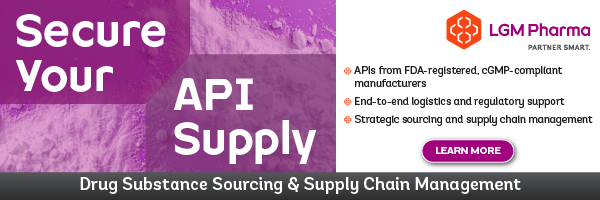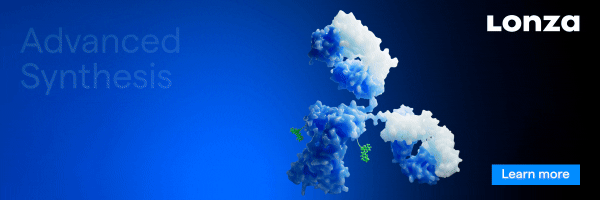By Jin Seok Hur, Director of ADC Platform Management, Axplora

Innovative strategies for efficient ADC payload manufacturing and bioconjugation
The use of antibody-drug conjugates (ADCs) has steadily increased in recent years, and the global ADC market is expected to be worth more than $16 billion in 2025 [1]. There has also been a considerable increase in private investment in ADCs since 2018, showing a growing interest in their therapeutic and commercial potential [2]. Although oncology is still the main focus of ADC research and commercialization, ADCs are being explored for new therapeutic areas, including infectious diseases and immunomodulatory applications [2]. This expansion into new indications will likely drive more ADC use.
However, ADC development is not free from challenges, particularly in the critical stages of payload production and bioconjugation. Overcoming them is crucial for ensuring efficient, cost- effective production and delivering these life-saving treatments to patients.
Challenges of ADC payload production and bioconjugation
ADC development hurdles show how difficult it is to get the balance right between therapeutic efficacy and patient safety. The inherent potency of the payloads themselves in a key aspect. These cytotoxic agents, designed to kill or to inhibit replication of cells selectively, have to be synthesized and handled with exceptionally high precision. Containment and environmental control during manufacturing protect workers and prevent unintended contamination.
Maintaining the payload’s structural integrity and stability throughout the complex conjugation process adds even more complexity, requiring an understanding of chemical interactions and degradation pathways.
The bioconjugation process, where the potent payload is linked to the antibody, has its own obstacles. Achieving a consistent drug-to-antibody ratio (DAR) is a constant challenge, as variations in DAR can dramatically affect the efficacy and safety profile of the ADC. Controlling the exact site of conjugation on the antibody is also critical, as this can change the ADC’s pharmacokinetic properties and target binding.
The linker, the molecular bridge between the antibody and the payload, must be engineered for optimal stability in circulation but also designed to release the payload efficiently when the affected microenvironment is reached. This delicate balance requires sophisticated linker chemistry and a lot of in vitro and in vivo testing. Also, the antibody component must show exceptional purity, specificity, and stability, as imperfections can compromise the ADC’s performance.
Scaling up ADC production for clinical trials and commercialization introduces new logistical and manufacturing difficulties. The multi-step process, which includes antibody production, payload synthesis, conjugation, and purification, requires careful process development and optimization. Strict quality control measures are essential to ensure the final product’s consistency and purity, requiring the development of robust analytical methods to characterize the complex ADC structure. The risk of contamination and impurities means that rigorous manufacturing practices and advanced purification techniques are needed.
Additionally, there are major regulatory and safety considerations around ADCs because of their potent payloads and intricate structures. Demonstrating their safety and efficacy requires comprehensive preclinical and clinical studies, addressing potential toxicities and off-target effects. The need for continuous monitoring and risk mitigation strategies throughout the development and manufacturing process shows how important a robust quality management system is. The journey from payload synthesis to a clinically viable ADC is complex, requiring a multidisciplinary approach and constant focus on quality and safety.
Ensuring efficient and cost-effective ADC manufacturing
Overcoming the complex challenges in ADC payload production and bioconjugation requires an approach focused on precise engineering and efficient production. Innovative strategies and technological advancements have been streamlining ADC production, with a focus on addressing challenges and delivering therapies to patients efficiently and cost-effectively.
These include:
Advanced conjugation technologies
Site-specific conjugation allows precise control over the DAR, resulting in more homogeneous ADCs with predictable pharmacokinetics and efficacy. By directing the payload attachment to specific locations on the antibody, this technology ensures a more uniform product, without the heterogeneity of traditional conjugation methods. This precision minimizes variability, reducing the risk of batch failures and lowering production costs. As a result, each ADC molecule exhibits a similar potency.
Optimized linker design
Developing linkers with optimal stability in circulation and controlled release at the target site matters greatly. Linkers are designed with chemical bonds resistant to hydrolysis or enzymatic degradation in the systemic circulation. This prevents premature payload release and reduces off-target effects. Computational modeling and simulations can be used to predict linker stability and release kinetics. This optimization enhances the therapeutic window, minimizing off-target toxicities and improving patient outcomes.
Enhanced analytical technique
Advanced analytical methods help thoroughly characterize ADCs. For example, liquid chromatography coupled with mass spectrometry can accurately determine the average DAR and DAR distribution of the ADC. By measuring the mass of the intact ADC or its subunits, researchers can work out the number of molecules conjugated to each antibody. Chromatography can be useful for separating ADC species based on their hydrophobicity, which correlates with the number of conjugated drug molecules. Using these and other methods helps protect product quality and consistency, reducing the risk of costly recalls or regulatory issues. Before these techniques were widely used, ADC characterization relied on less precise methods such as UV-Vis or fluorescence spectroscopy, or electrophoresis, among others. Those traditional methods often gave only average values or indirect measurements, without the detailed structural information.
Quality by design (QbD)
Adopting QbD principles throughout the development and manufacturing process ensures that critical quality attributes are identified and controlled. QbD represents a systematic and proactive approach to achieving consistent product quality, using target product profiles (TPPs), identifying critical quality attributes (CQAs) and critical process parameters (CPPs), and proactively assessing risk. This approach minimizes process variability and enhances product quality.
Future strategies to streamline the ADC payload manufacturing process
A range of technological advancements and specific strategies aim to simplify complex synthetic routes, reduce waste, and consistently produce high-quality payloads.
Although automation and closed systems are widely adopted in large-scale pharmaceutical manufacturing, their use in ADC production remains limited due to the relatively small reactor sizes typically employed (often below 1,000 L). Nevertheless, emerging technologies such as robotic synthesizers, automated chromatography, robotic liquid handling, and flow chemistry systems hold promise for the future. In ADC applications, these approaches could reduce manual handling, minimize contamination risks, and improve worker safety when dealing with highly potent payloads. Closed-system processing, where therapeutics are handled entirely within sealed environments, may also help ensure sterility and reduce product loss. While not yet a widespread market trend, these innovations could become more relevant as ADC manufacturing scales or as process intensification becomes a focus.
Linked closely to these developments is the concept of continuous manufacturing, where automation and integrated, closed processes enable a streamlined, uninterrupted flow of materials. Unlike traditional batch processing, continuous manufacturing offers a streamlined, uninterrupted flow of materials, reducing processing times and minimizing variability. This approach holds the potential to greatly improve throughput and lower production costs, making ADC therapies more accessible and affordable.
Another promising avenue is the integration of microfluidics. These technologies help better control chemical reactions at a microscopic scale, making it easier to synthesize complex payloads with unprecedented purity and yield. By reducing the use of reagents and side reactions, microfluidics contributes to a more sustainable and cost-effective manufacturing process. Also, the scalability of microfluidic systems makes them a good option for both small- scale development and large-scale commercial production.
Enzymatic synthesis is becoming more popular as a greener and more efficient alternative to traditional chemical synthesis. With high selectivity and catalytic activity, enzymes can help achieve complex reactions under mild conditions, reducing the need for harsh solvents and reagents. This approach reduces environmental impact and makes purification processes simpler, leading to cost savings and improved product quality.
The increasing use of computational chemistry and artificial intelligence (AI) is also revolutionizing payload design and synthesis. AI-driven algorithms can predict reaction pathways, optimize process parameters, and identify potential impurities, accelerating development timelines and improving process robustness. Using these powerful tools, researchers can streamline payload manufacturing, reduce development costs, and ensure the consistent production of high-quality ADC components. These innovative strategies, combined with advancements in linker technology and conjugation chemistries, help to make the future of ADC therapies more efficient and sustainable.
The future promise of ADCs
The next wave of ADC innovation is likely to be driven by formats and payload strategies already in clinical development. Current research and early clinical trials are exploring:
- Next-generation bioconjugation methods, including advanced enzyme-mediated and photochemical methods, enable more precise, site-specific conjugation.
- Bispecific ADCs, designed to engage two distinct antigens for improved
- Dual-payload ADCs, carrying two different cytotoxic agents to overcome resistance or target multiple mechanisms.
- Oligonucleotide or peptide conjugates, broadening therapeutic applications beyond traditional small-molecule payloads.
These approaches represent the most immediate trends expected to reach the market in the near to mid-term. Other novel conjugates, such as steroid-linked ADCs, are also under investigation.
Innovative linker technologies (such as stimuli-responsive and biodegradable linkers), novel payload classes, and AI-assisted design will continue to expand the therapeutic potential of ADCs [3].
Expert contract development and manufacturing organizations (CDMOs) with bioconjugation and payload manufacturing expertise will remain critical partners in translating these innovations into commercial products, with a focus on patient safety alongside robust process development, scale-up, and quality control. In essence, CDMOs act as crucial enablers, empowering researchers and pharmaceutical companies to overcome the challenges of ADC development and deliver transformative therapies to patients.
References


